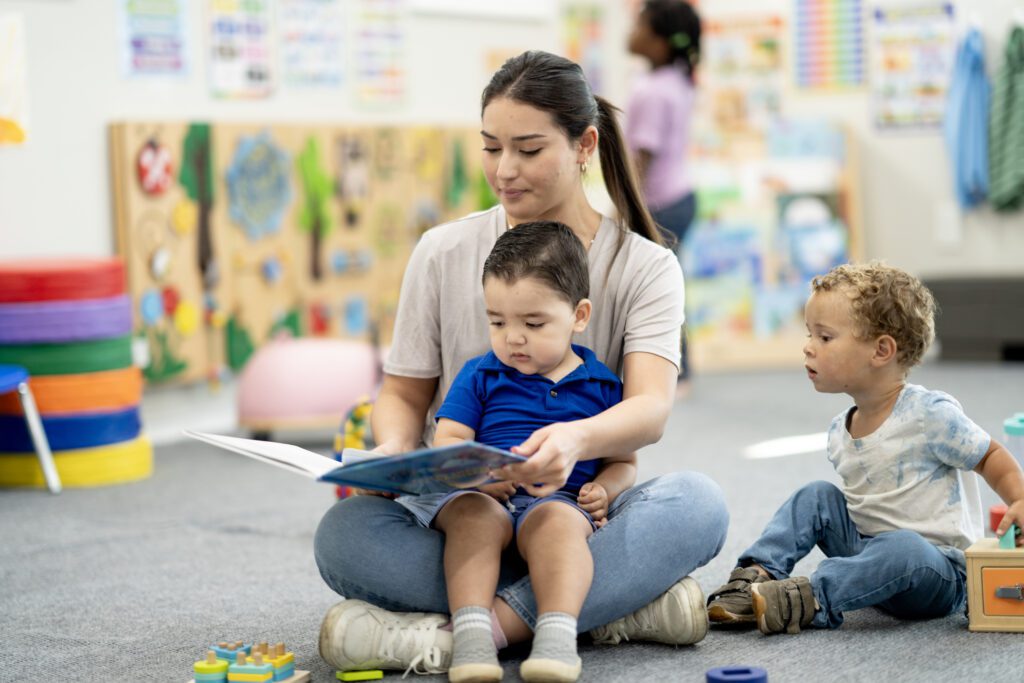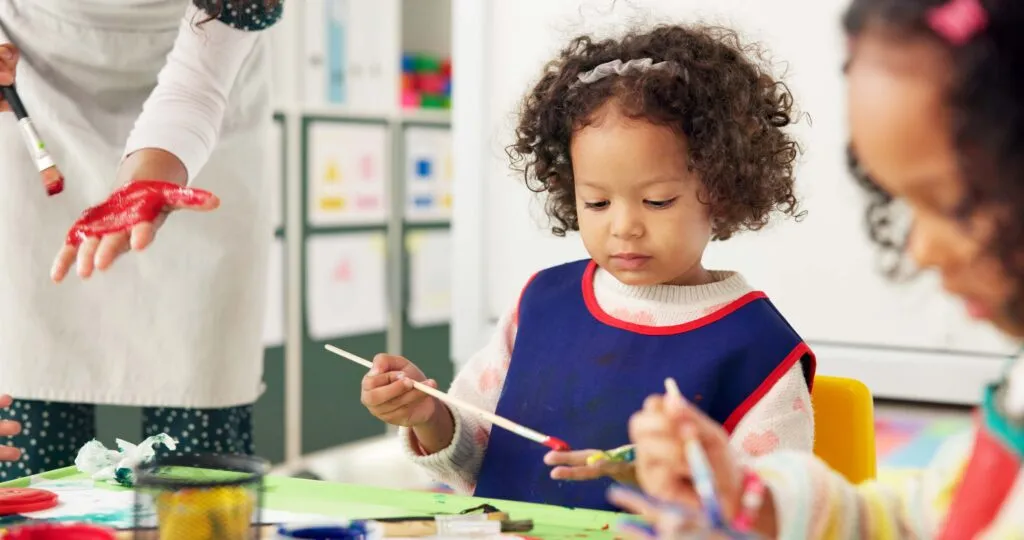How Leaders Can Create a Positive School Culture in Early Childhood Education


Summary of Insights
- Positive school culture starts with leadership: modeling, consistency, and empathy.
- Supportive cultures drive teacher retention and family trust.
- Small, daily actions—like clear communication and recognition—matter most.
What Does a Good School Culture Look Like from a Leadership Lens?
A strong school culture is something leaders make visible every day. It shows up as shared values conveyed through warm relationships; predictable routines; and a sense of safety for teachers, children, and families.
Leaders shape good school culture through intentional, everyday actions, such as by modeling calmness, communicating clearly, protecting planning time, and following through on feedback. A strong, healthy culture isn’t about posters or slogans; it’s created by how people feel when they are in the building or program. When educators feel seen, supported, and trusted, those same feelings extend to children and their families.
In early childhood programs, school culture and climate inform every hallway conversation, staff meeting, and classroom visit, as well as the way people care for one another when things get busy and tough. It’s reflected in how problems are solved, how feedback is given, and how people treat one another. Early childhood leaders play a pivotal role in making those shared values come alive, because their behaviors are what sustain a culture of trust and consistency.
The Leader’s Role in Building School Culture
Leaders are the architects of positive school culture. Their daily choices—how they listen, respond, and communicate—set the emotional tone for the entire program.
Culture is leadership in action. It’s not just what leaders say: it’s what they model. When leaders demonstrate empathy, transparency, and follow-through, they show teachers and families that “This is a place you can trust.”
That trust creates a ripple effect. When teachers feel supported, they become more confident, consistent, and collaborative in the classroom. Children benefit from that stability through stronger relationships and richer learning experiences.
Building Trust and Belonging Among Staff
Positive school culture starts with the people who spend their days creating it. When teachers feel valued, respected, and connected, they bring that same energy and sense of belonging to their classrooms.
- Create a sense of “You belong here.” Make every staff member feel like a vital part of the community, no matter their role or experience level.
- Recognize strengths and individual contributions. Highlight successes in team meetings or newsletters. Recognition doesn’t have to be formal, it just has to be sincere. Sincerity matters more than formality.
- Provide safe spaces for reflection and professional growth. Encourage teachers to share ideas and challenges without fear of judgment.
- Lead with empathy and curiosity. Ask questions like “What’s been working well for your team?” or “What’s something you’d like to see change?” Then, truly listen to the answers.
Building school culture isn’t an initiative or a checklist. It’s a mindset that shapes how people work together and solve problems.
Aligning Values Across the Program
Culture thrives when everyone is moving in the same direction. Leaders help connect daily routines to shared purpose, reminding teachers and families that “this is a good place to be.”
- Clarify shared goals. Whether it’s implementing new curriculum, improving family engagement, or strengthening assessment practices, make sure every change ties back to your program’s mission.
- Build systems that reflect care and respect. Thoughtful scheduling, realistic and meaningful professional development, and clear communication help teachers feel valued and respected.
- Encourage consistency without rigidity. Predictable routines help teachers and children thrive, but flexibility communicates trust. Give educators room to personalize their practice within a shared framework.
When values and practices align, programs become calmer, more collaborative, and more joyful. Strong school culture is built on alignment between leadership decisions and daily classroom practice.
Creating a Culture That Includes Families and Children
A positive school culture doesn’t stop at the staff room door—it extends into every classroom and home connection.
Leaders model how culture flows from adult relationships to child experiences. When families see open communication and mutual respect among staff, they naturally feel welcomed and become part of that culture as well.
Consider ways to strengthen family connection.
- Host informal family gatherings or “coffee with the director” sessions to strengthen trust.
- Celebrate families’ cultural traditions and invite their input on school events.
- Highlight examples from classrooms where teachers have built strong, inclusive communities.
During the Creating a Joyful School Culture panel discussion, leaders shared how including families in conversations about curriculum and community helped teachers feel more supported, families more included, and children more confident and secure.
School culture in early childhood education is strongest when everyone—leaders, teachers, families, and children—feel they are part of something shared.
School Culture Tips for Early Childhood Leaders
Small, consistent actions create the biggest impact.
- Start each meeting with a reflection or story of connection. Centering joy or gratitude sets the tone for collaboration.
- Observe classrooms with a focus on relationships, not compliance. Look for moments of engagement, trust, and belonging.
- Ask for teacher feedback regularly and act on it. Following through shows respect and builds credibility.
- Protect planning time. It’s one of the clearest ways to show teachers that their time and expertise are valued.
- Communicate clearly and often. Silence breeds uncertainty; clarity builds confidence. Clear is kind.
Every interaction is an opportunity to reinforce a strong, positive school culture built on trust, consistency, and shared purpose.

Strong leadership builds more than systems—it builds belonging.
Explore how early childhood leaders across the country are creating strong, positive school cultures where everyone feels safe, supported, and inspired in our recent webinar.
Frequently Asked Questions
Culture is the set of shared beliefs, behaviors, and relationships that define how a school operates. Climate is how that culture feels day to day, the current emotional “weather” in the building. School culture shapes school climate over time.
Begin by listening. Acknowledge what’s been hard, then rebuild trust through small, consistent actions; clear communication; transparency; reliability; and genuine recognition.
Policies that protect teacher planning time, prioritize meaningful professional learning, support supervision and coaching structures, and establish clear communication channels help maintain trust and stability.
Model it from the top. Share clear expectations, provide coaching and resources, and celebrate examples of alignment. Regular walkthroughs focused on relationships rather than compliance help maintain consistency with empathy.


